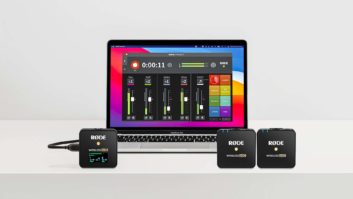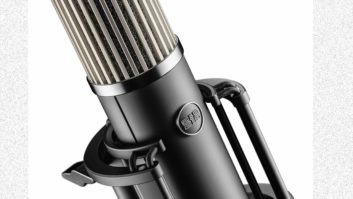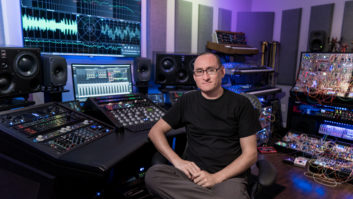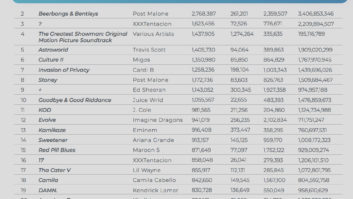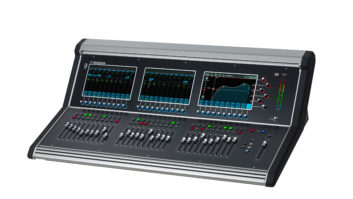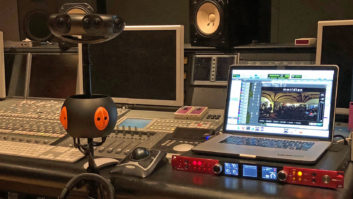When it comes to tuning your product news, music, sports, and more, streaming is king. Static websites as we’ve grown to know them are losing ground to the stream every day. Yale University professor of computer sciences David Gelernter saw this decades ago. He calls it a “time-based wordstream”—a quickly, and regularly refreshed collection of content where you can “watch a single, customized fashion show across sites.” This mode of delivery is how consumers now and in the future will connect to the Web, but I want to talk about my technology and info streams.
For example, purchasing tech products this way takes Web commerce to the next level, and audio manufacturers are on board. EastWest’s ComposerCloud, Slate Digital’s Everything Bundle, and Avid’s new purchasing models all embody a new delivery method. If you buy-in, new sounds, plug-ins and software updates all come directly to you ready for download—it’s a tech stream.
This brand of passive, focused shopping is the new new. And it’s not just software. Tony Cariddi from Avid told me he’s on board with harrys.com, which delivers his razor blades on a subscription basis with substantial savings. If you’ve seen my picture, you know that shaving is big in my life, so after I run out of my current run of Gillette multiblades, I’m down with the harrys.com tributary of the stream.
But what about those who are shopping your studio, service, or products? How can you better feed your tech and info stream? For the average audio pro, how we promote ourselves, our studios, our music, our band, and our skills is only as fresh as our content—our stream. Like you need another job, right? You do if you want to be successful. It needn’t kill your “free” time. Some companies for hire will keep your data moving through all the pertinent outlets, but you still need fresh content to push.
While producing content for Mix and doling knowledge to students in my teaching gig, I need to stay current with the latest audio techniques, concepts, products, music and other info. To see what’s hot, I look to those who do an excellent job creating data. My content heroes include the team at Pensado’s Place, the subject of Mix’s January cover. Dave and Herb have taken a simple concept and blown it up worldwide. The interviews are as educational and interesting as they are diverse, featuring an incredible roster of talent. Into The Lair gives you a look inside Dave’s head and how he delivers great-sounding mixes in his day gig.
Another great service is Puremix.net, which features tutorial videos, interviews and other great content on a subscription basis. The site is driven by New York-based engineer Fab Dupont and other high-end audio pros offering insights into mastering, tracking, mixing, producing and more.
How I feed my info stream has changed over the years. I’ve been producing digital content for Mix as part of my gig since 2003. Most of the time I have the luxury of having a film company do the heavy lifting. We’ve done webinars for Focusrite, Avid, Lynx Studio and Shure, among others, plus Mix’s video-based Seminars on Demand and Recording The Band series. In the past dozen years, I’ve had to step up my delivery chops in ways I never imagined. My Nashville gig is a startup, meaning everyone wears five hats. One of my new gigs is video editing. I started cutting video in iMovie and quickly moved up to Final Cut Pro, where the audio editing is better.
Next I looked for a way to step up my video-capture ability—enter the DJI Osmo. This handheld, gimbal-mounted camera is impressive. DJI is a drone company. Deep River Studios, featured on the cover of Mix’s December 2015 issue, used a DJI drone to take sweeping overhead shots of its complex, using it to market its business. The Osmo is new tech all the way. It’s light, handheld and can produce stable video up to 4k resolution. It stores the video on board using a Micro SD card and uses your phone running the DJI GO app as the reference monitor. The phone can be mounted on the Osmo handle, or separated. I’ve done some great overhead shots at Blackbird by flying the camera, then controlling it via the Osmo’s Wi-Fi network.
The first week I had the camera, I showed it to Trey Ziegler, a photographer working with one of the bands at Blackbird Studio working with my students. As soon as I took it out of the case, he was into it. He asked if he could borrow it for the shoot and is using the content for the band’s social media and music videos. Next I showed Scott Hernbeck, general manager at Clair Global Nashville, who borrowed the camera over the holidays. He wanted to see how good it was at capturing content for its website, and was wowed.
I specifically purchased Osmo for a new series of videos I’m creating for Hal Leonard and Pensado’s Aspire series just announced at Winter NAMM. I can write training content all day long, but video was my weak link. Osmo makes me look like Vilmos Zsigmond—well, almost. It’s quick, easy to set up and tear down, highly portable and can integrate wireless or wired audio directly into the camera. All this for about $650—a worthy investment.
For pushing info in 2016, I’m thinking more Periscope, targeted app, Vine and YouTube, and less WordPress, Chrome and website. Look for it.
